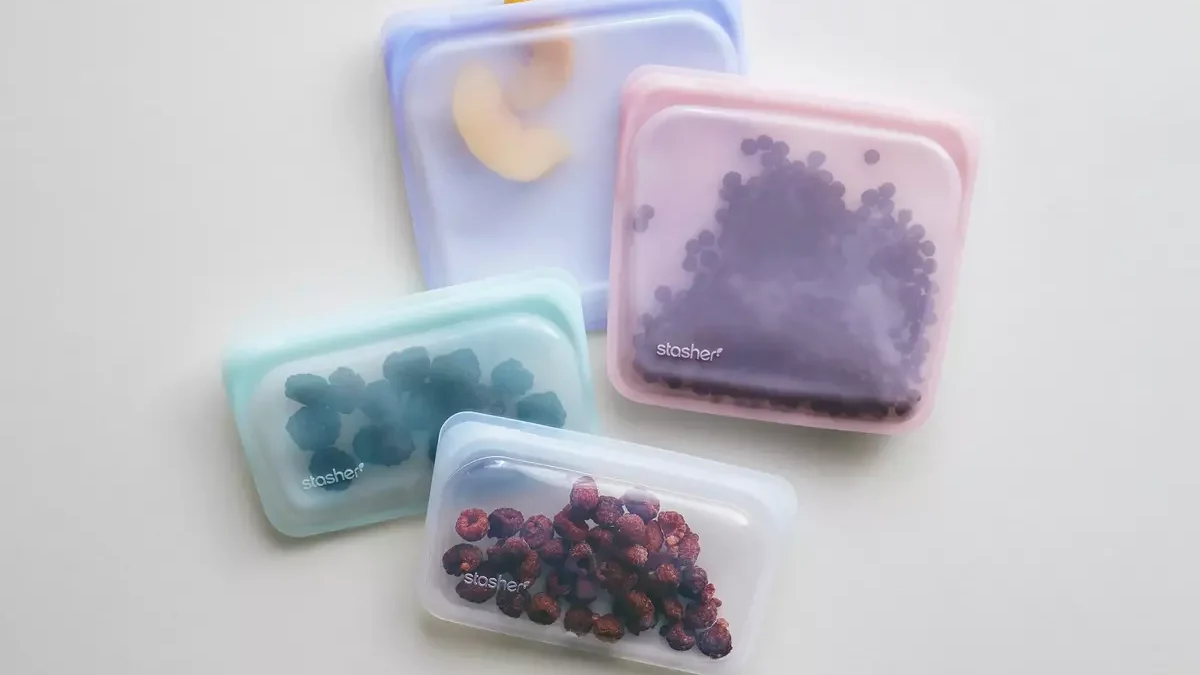Can You Use Stasher Bags That Have Had Mold on Them?

As anyone who has been using Stasher bags for a while can tell you, they are life savers. After all, they are safe, reusable, durable, and good at keeping your food fresh. But can these bags grow mold? Well, that’s what we’re going to talk about in today’s post.
Can Stasher bags get mold in them?
Yes, Stasher bags can get mold in them if they are not washed and dried properly or regularly. However, these bags’ non-porous silicone surface makes it hard for mold, bacteria, and germs to grow on them.
To make it even harder for mold to grow on your Stasher bags, ensure that you clean them after every use. Ensure all particles are removed and pay special attention to the corners of the bags.
You can even use small bottlebrushes to get this done. If you want to go further and sanitize your Stasher bags, soak them in boiling water and vinegar for a while. Whatever the case, never turn your bag inside out.
Doing this is unnecessary and can even weaken the edges of your Stasher bag, making it more prone to breakage.
After all, these edges are just made of a liquid form of the silicone used to make Stasher bags. This liquid is what binds the outer and inner and outer sides of your bag. It is usually cured with the rest of the bag after application.
Another thing to keep in mind is that Stasher bags are dishwasher safe. As such, you can machine clean them after every use to prevent mold and bacterial growth. However, you will still need to deep clean your bag by hand once in a while.
Also, always ensure you air dry your Stasher bags after cleaning them. You can use a drying rack or hang them on a bottle.
How do you get mold out of Stasher bags?
If your Stasher bag already has some mold, it’s not the end of the world. You can get rid of the mold by soaking your bag in vinegar and boiling water for a while. Afterward, clean the bag using some warm water and a homemade cleaning solution.
You can make such a solution by mixing equal parts lemon juice, baking soda, and distilled white vinegar. Once you’re done making this, apply it to your bag’s inside using your fingers or a scrub brush and let it sit for around 30 minutes.
Afterward, thoroughly rinse the bag with warm water. Finally, you can leave the bag to air dry on a rack or wipe it with a towel and/or paper towel. The latter option will particularly get rid of water spots.
Is it safe to keep using a Stasher bag that has mold in it?
No, it’s not safe to keep using a Stasher bag that has mold in it. Doing this can make you sick because you will end up inhaling or even ingesting the mold.
Can you sterilize Stasher bags?
Yes, you can sterilize Stasher bags. You can even sterilize them with things inside. For instance, you can place breast pump parts inside of them and sterilize them as well.
You can do this by adding the parts and 2 ounces of water into your Stasher bag before placing it in the microwave for around 5 minutes on high. Just ensure that you leave an opening of at least two inches on the bag’s seal to allow steam to escape.
To avoid steam burns, you should also use tongs to remove the bag from the microwave once sterilization is done. Afterward, place it on a heat-resistant countertop or a towel until it cools.
If you only want to sterilize your Stasher bag though, just place it in a pot of water and bring it to a boil. Leaving the bag to boil in the water for 5 minutes is usually enough to sterilize. This usually also works for breast pump parts.
How do you get stains and smells out of Stasher bags?
To get stains out of your Stasher bag, leave it in the sunlight for a few hours. This will sun bleach it. If you want to get rid of smells, soak your bag in a solution of equal parts vinegar and water for a few hours.
Alternatively, you can bake it at 350 degrees Fahrenheit for eight minutes. Just ensure that you place it on a baking sheet beforehand.
Keep mold from your Stasher bags at all costs!
For the sake of your health, do your best to keep mold from your Stasher bags. Since these bags are dishwasher-safe and not affected by high temperatures, this is usually easy to do.
